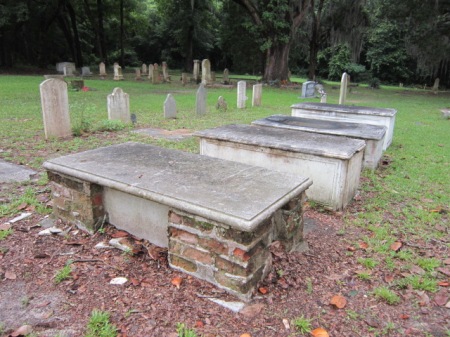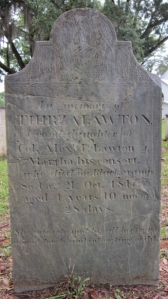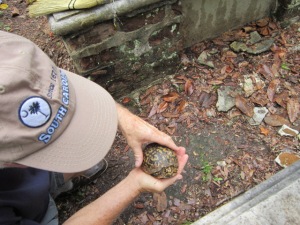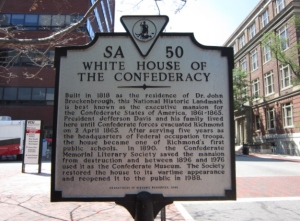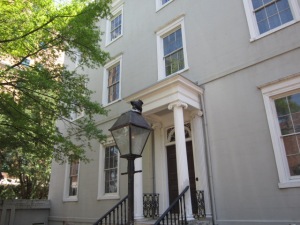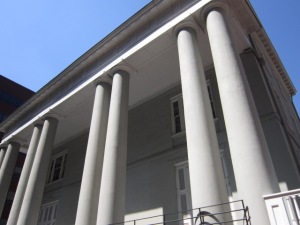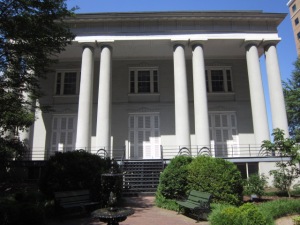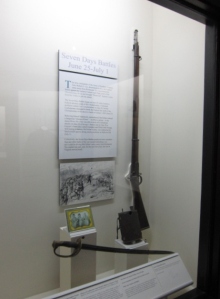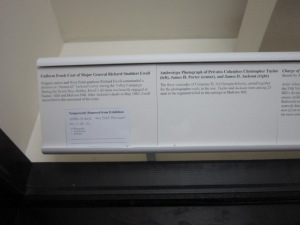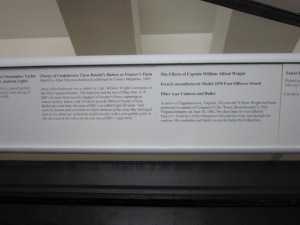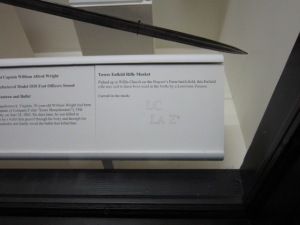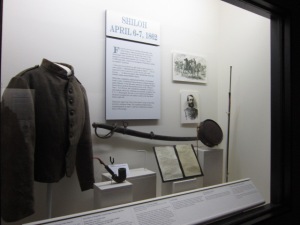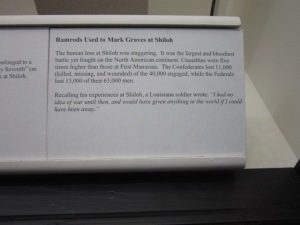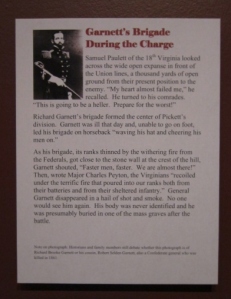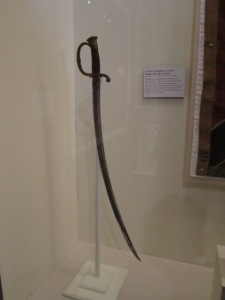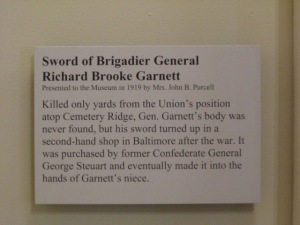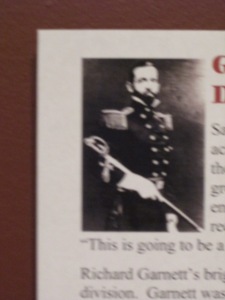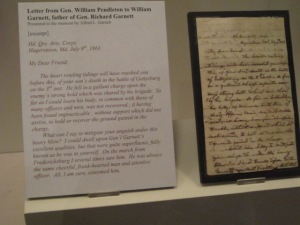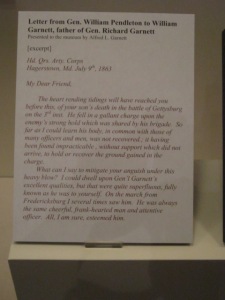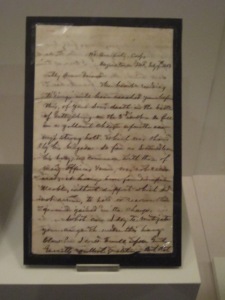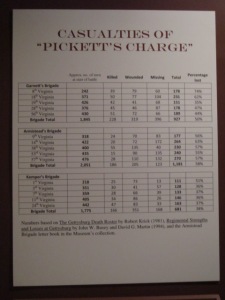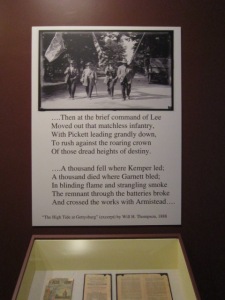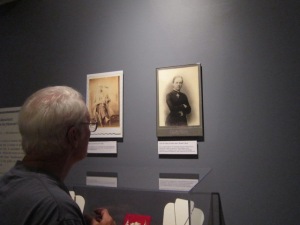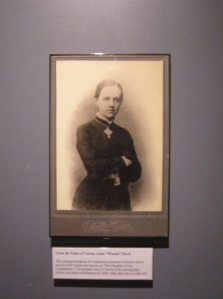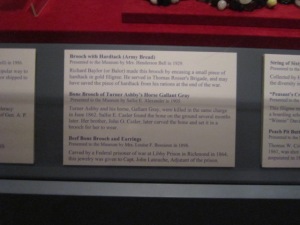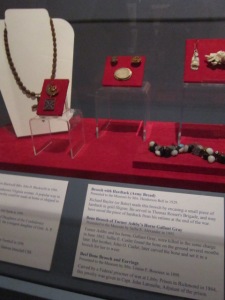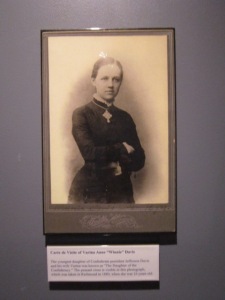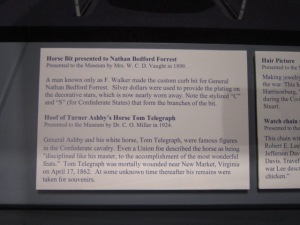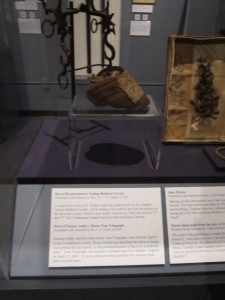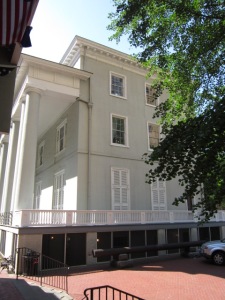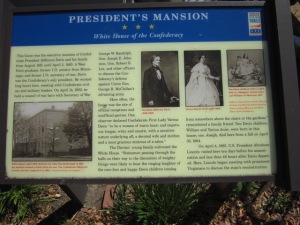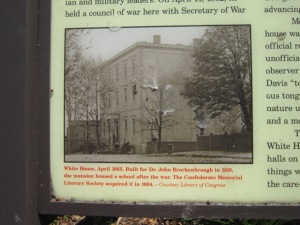Now that was a mouthful.

These Lawton folks have some kind of serious reunion planning mojo. There’s a gathering with a dinner, a concert, a breakfast, introductions, a business meeting, a presentation, a luncheon, a group photo, and a tour. Most southern reunions involve a bar-be-que, some cold drinks, and perhaps fireworks. I mean to tell you, Lawtons are the undisputed champions at the family reunion business. If their family reunion were an actual business, they’d be listed up near the top on Dun & Bradstreet.
This year, the reunion was a combined one with the Robert (Roe-BARE) families, and some of those folks came from Louisiana. The scene opens at beautiful downtown Robertville, which was burned by Sherman.
The dinner took place at the old J. C. Richardson house.






JAMES C.
RICHARDSON
HOUSE
(CA. 1890)
The James C. Richardson House was
built circa 1890 as the principal
residence of James Clarence Richardson
(1852-1931), a significant local
merchant and planter with business
interests throughout Hampton County
and, ultimately, Jasper County. For
many years, he was the operator of a
general store located close to the house
and fronting on Gillison Branch Road.
As his business expanded, Richardson
also opened a location at Garnett near
the rail depot with J. W. Chisolm, a
prominent Hampton County merchant.
Prior to Jasper County’s founding,
Richardson was a major figure in
Hampton County politics, serving on the
board of control, board of equalization,
and the dispensary board, as well as in
numerous other capacities for the
county. He was also a Hampton County
commissioner in 1906. As the first
elected state senator from Jasper
County, Richardson served for two
terms from 1913 to 1916. After a brief
absence from politics, he held a post on
the Jasper County Board of Education
from 1923 to 1925. After 1925,
Richardson lived primarily at Garnett.
He was also superintendent of the Pine
Land Club immediately prior to his
death. He is buried in Black Swamp
Methodist Cemetery.
Following the death of Cora H. (Riley)
Richardson, the widow of James C.
Richardson who lived for many years
following his death in the old family
homestead at Robertville, the
Richardson heirs sold the house and
300 acres of land to C. H. Warnock, Sr.,
in December 1945. By 1946, Warnock
developed a scheme to subdivide most of
the acreage fronting on Gillison Branch
Road into seventeen long, narrow
parcels, while dividing the land near the
center of Robertville, including the main
house area, into five separate plots.
Warnock in turn sold three of these
latter parcels, including the main house
tract of 19.7 acres, to William Joseph
Langford for $5,000 in November 1946.
William was married to Mildred
Blakewood Langford, a resident of
Scotia, SC, and moved from Pineland to
Robertville in 1947. As residents of
Robertville, William and Mildred built
two grocery stores. Once building no
longer exists and the other is still in
operation as Brenda’s Country Store.,
though not in the original building built
by Langford. Mr. and Mrs. Langford
eventually added an antique
furniture store to the back of their
grocery store and became well known
for the fine antique pieces that they
acquired and sold. They, along with
other residents in Pineland and
Robertville, were instrumental in re-
opening the nearby Robertville Baptist
Church in the early 1950s, and it
remains an active, full-time ministry to
this day.
Mrs. Langford was very much a
historian and did a lot of research on
the Robertville Baptist Church. She was
instrumental in getting the Church
listed on the National Register of
Historic Places in 1972. Mr. and Mrs.
Langford loved Robertville, its culture,
its history, and its people, choosing it as
the place to raise their three children:
Margie Langford Malphrus who resides
with her husband Frankie, in Ridgeland,
SC; Gloria Langford Tuten, who resides
with her husband, Redden Tuten, Jr., in
Estill, SC; and William Joseph Langford,
Jr. (1948-1976).
Following Mr. Langford’s death in 1983,
the house and remaining land passed to
his widow, Mildred, and upon her death
in 1990, the property passed to their
daughters. Gloria and her husband
Redden subsequently bought Margie’s
interest and are now the owners of the
house and property. In 1997, the Tutens
used the house to establish a Christian
hunt club – The Black Swamp Hunting
Club – which is currently inactive. In
2010, Redden and Gloria purchased the
swampland behind the house, and the
property now includes the house and
approximately 50 acres of land. The
house has been restored, adhering as
closely as possible to the Victorian era
in which it was built, and has been
affectionately named “Magnolia
Moments” by Gloria.
The James C. Richardson House is an
outstanding example of late nineteenth-
century Folk Victorian architecture,
with many of its original architectural
flourishes still in place. The house also
sits on land that served as the campsite
on January 29, 185, for the First
Division of the 20th Corps of the Union
Army during Sherman’s Campaign of
the Carolinas. This remarkable Jasper
County home is presently going through
the nomination process for the National
Register of Historic Places.
James C. Richardson House
Gloria and Redden Tuten, owners
67 Gillison Branch Rd., Robertville, SC
PO Box 714, Estill, SC 29918
(803) 625-2238
*****
After dinner at the J. C. Richardson house, we sojourned across the highway to the Robertville Baptist Church for a piano and organ concert.






Historic
Robertville
Baptist
Church
Established in 1781
Twenty-six Robertville Drive
Robertville, S. C.
Mailing address:
Post Office Box 506
Estill, South Carolina 29918
THE ROBERTVILLE BAPTIST CHURCH
The Robertville Baptist Church was
first organized as The Black Swamp Baptis
Church sometime between 1781 and 1788.
Different historical accounts give different
dates, and all are between 1781 and 1788.
The church derived its name from the geo-
graphically defined area known as The
Black Swamp. The first building was locat-
ed NNE of Robertville on the Robert Cemetery,
and served as a place of worship during the
Revolutionary War era. It has been stated
that it was a building of little significance.
The members eventually moved the
congregation to the village of Robertville,
and in 1824, constructed the Black Swamp
Baptist Church. The magnificent two story
structure was said to be one of the most
beautiful churches in the state of South Car-
olina and was reportedly constructed for
the sum of $4,000.00 History records that
the Rev. Richard Furman, for whom Furman
University is named, visited and preached
at the Church and that the membership
played a significant part in establishing the
South Carolina Baptist Convention in the state.
The church was used as a place of
worship until January 30, 1865, when Union
soldiers came through Robertville and de-
stroyed it, along with a small Episcopal
Church, a private school known as The
Robertville Avademy, and all the homes
and businesses that were a part of the ac-
tive community. Robertville, at the time of
the war, was a major crossroads between
Savannah, Orangeburg, Augusta, and
Charleston, because of its location near the
Savannah River.
The present church building was
constructed in the then Beaufor Couty
seat of Gillisonville, S.C., thirteen miles from
Robertville in 1848 as the Episcopal Church
of the Ascesion. It was spared the fires
of Sherman’s soldiers, and after the Civil
War, was obtained from the Episcopal con-
gregation who left Gillisonville and went to
Beaufort. In 1871, this building was moved
from Gillisonville to Robertville. How it was
moved remains a mystery. Upon close ex-
amination, Roman numerals can be found
on the frame of the windows, indicating that
the windows were numbered before they
were removed to be replaced when the
church building was re-established on its
present site. It has remained a Baptist
place of worship since that time. The name
was changed from Black Swamp Baptist
Church to the Robertville Baptist Church in
1934 to honor the Robert family of John
Robert (1742-1826) who was the owner of
Cotton Hill Plantation, a Revolutionary War
Soldier, and the founder of Robertville. The
Robert family that settled in the3 area around
Robertville were all descendants of the Rev.
Pierre Robert, a Huguenot minister who
came from Switzerland to the Carolinas in
1690 and settled in the Santee area. Some
of his descendants moved to the Black Swamp
area that eventually became Robertville.
Also, Revolutionary War officer, Joseph
Lawton, who was a Justice of the Peace,
was buried inn Robertville Baptist Church
Cemetery in 1815.
In 1951, the Church was closed and
not having regular services. A group of peo-
ple living in the Robertvillwe and Pineland
area opened the Church for part time ser-
vices. Robertville Baptist Church and Till-
man Baptist Church shared the same pas-
tor for a few years until 1972, when both
churches became full time ministries and
remain so at the present time. Extensive
remodeling was done in in 1964. The solid
heart pine pews were replaced and used to
construct the present choir loft and pulpit
area. The baptistry was added in the
1980’s. In August, 2010, the Church re-
ceived a gift of the pews and pulpit furniture
from the Anderson Mill Baptist Church in
Spartanburg, S.C., and that began another
extensive remodeling which included re-
storing the heart pine and plaster walls,
heart pine floors, new wiring and adding
wall lights. The only thing not yet completed
to bring the Church back to its original
décor as much as possible, is the tongue
and groove ceilinlg which is hidden under
the present suspended ceiling. The Church
also received the gift of a Steinway grand
piano in December 2009, and a sidewalk in
front of the Church was added in October
2012. The Church was listed on the Nation-
al Register of Historic Places in 1972 as sig-
nified by the medallion on the front of the
Church and by the historical marker adja-
cent to Highway 321. The Church was rec-
ognized by the South Carolina Baptist Con-
vention in 2010 as one of the few churches
in the state over 200 years old that still has
an active ministry. Robertville Baptist
Church is also one of four ante-bellum
churches that remain in Jasper County.
Robertville’s only claim to fame lies
in the fact that Henry Martyn Robert, author
of “Robert’s Rules of Order for Parlimentary
Procedure” was born in Robertville on May
3, 1837. His father, the Rev. Joseph Thom-
as Robert, moved the family to Ohio to min-
ister there when Henry Martyn was thirteen
years old. Henry Martyn went to West Point
Academy, where he graduated fourth in his
class in 1857 and became a military engi-
neer. He became one of the country’s
leading parliamentarians after writing
“Robert’s Rules of Order” which first pub-
lished in 1876. He eventually became Briga-
dier General Henry Martyn Robert. He died
in Hornell, N.Y. on May 11, 1923, and is
buried in Arlington National Cemetery.
On February 20, 2013, Robertville
Baptist Church hosted a visit from Henry
Martyn Robert III, the grandson of Gen.
Henry Martyn Robert who came to Rob-
ertville to visit the home of his ancestors.
Mr. Robert at 92 years old, is still an active
Parliamentarian. He bears a remarkale re-
semblance to his grandfather, Henry Martyn
Robert. He resides in Annapolis, Maryland
and has recently co-authored “Robert’s
Rules of Order” (11th edition).
The history of the small community of
Robertville is as rich and deep as the mag-
nificent oaks that grace the Church yard,
and the present members of Robertville
Baptist Church are committed to keeping
the doors open and the history alive with
the belief that God has established it as Ho-
ly Ground.
*****










Right about here, we were heading to our respective vehicles to head over to the Robert Cemetery. We had been exchanging pleasantries with some of Sugar’s cousins, who commented that they were not going to the Robert Cemetery. They were going to see if they could find Mistletoe Grove, and they produced a printout about Mistletoe Grove. I took one look, and realized, it was a printout of my post about Mistletoe Grove, and I burst out, in surprise as well as shock, THAT’S ME! The women looked at my nametag for confirmation that I was indeed ruthrawls. It was a weird moment. It almost felt like I had an instant fan club, until they asked if the blog post had directions there, and I had to say that it did not. Poof. Fan club gone, but in a gracious Southern way. On to bigger and better things.

We watched a woman use a powderpuff and cornstarch to dust over and into the cracks and crevices on a reclining headstone. It’s natural and gentle and washes away with the rain.
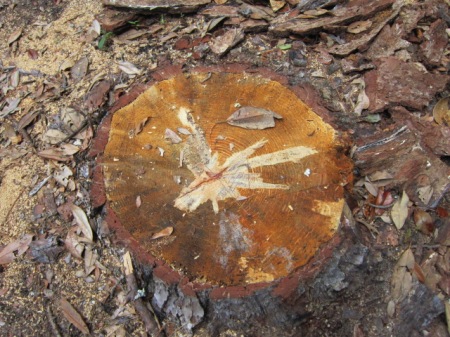
This stump was part of several trees that were removed because they were encroaching on headstones.






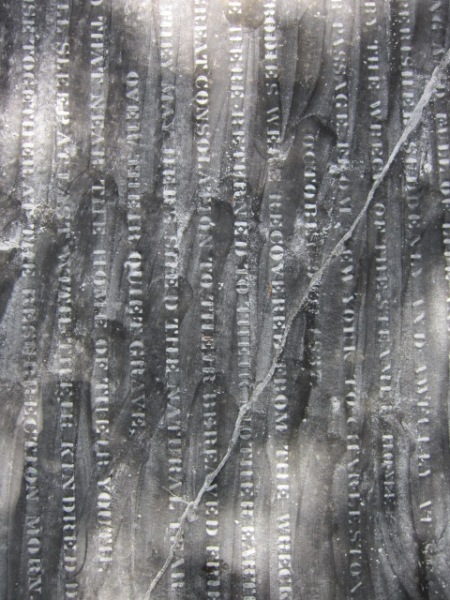



And it’s over. Just like that. Another Lawton Family Reunion has come and gone. See you next year!















